Eco trekking to Everest Base Camp 2025 is not just a movement but an ethical manner of visiting one of the most admired natural wonders of the universe. While tourism numbers surge in the Himalayas, evidence of the environmental effects of trekking is mounting. From littered trails and overused plastic to the pressure on local resources, the demand for sustainable travel has never been greater. Luckily, both trekkers and local communities are embracing eco-friendly practices that mitigate the environmental threats to the delicate beauty of the Khumbu region.
Everest Base Camp Those looking to minimize their footprint can make choices with impact before the trip even begins. By choosing eco-certified trekking agencies and sustainable accommodations, you can ensure that your money goes towards responsible eco-tourism practices. Many of these businesses partner with local communities, use environmentally stable elimination of waste, and reinvest in the area, whether through education or reforestation initiatives. Trekkers are also guided on their packing, such as carrying reusable water bottles and personal water filters, and cloth bags to replace plastic, which has increasingly been scrubbed from usage — it’s now banned in many parts of the trail, including Sagarmatha National Park.“
While on the trek, it’s important to keep consumption in check. Lodges depend on wood-burning stoves and everything from electronics to soap that must be imported, so choosing local, vegetarian meals and solar-heated showers when they are an option can help minimize your footprint substantially. Bring your own trash home — especially things that don’t biodegrade — is a simple but effective act of environmental stewardship. Trekkers are also advised to stay on marked trails to prevent further degradation and damage to plant life, and to respect wildlife by watching quietly from a distance.
A huge part of eco-friendly trekking is cultural respect. Being respectful of local Sherpa communities, learning about their culture, and supporting their small businesses leads to sustainable tourism that is beneficial for both parties. Buying handicrafts, sleeping at locally owned teahouses, and hiring local guides and porters ensures a more genuine experience while contributing to the sustainable growth of the local economy.
Among the most meaningful ways to help the region is to support or donate to conservation and community projects. The Everest area is actively engaged in forest conservation, trail clean-ups, and education for locals and tourists alike. Even small contributions will help to protect trails, villages, and mountaintops for generations to come.
In 2025, the sustainable Himalayan Base Camp Trek isn’t about sacrificing comfort or adventure — it’s about changing your lens and traveling with purpose. It means learning to appreciate the road not only for its breathtaking sights but also for the duty it entails. The mountains give us an incredible gift, and the best way to respect that is to tread lightly, support local people, and make decisions that sustain rather than strain. Sustainable trekking is not just the future — it’s what makes the future of Everest possible.
Why it Matters: Eco-Friendly Trekking in the Himalayas
Eco-trekking in the Himalayas isn’t simply a way to travel — it’s a pledge to protect one of the world’s most beautiful and delicate ecosystems. The dramatic landscapes, spiritual richness, and welcoming communities of the Everest region are already under ever-increasing pressure from the growing volume of trekkers each year. Trails that once seemed isolated now shuffle under the burden of thousands of feet, plastic bottles, and demand for energy far greater than the environment can sustainably provide.
By 2025, there will be stronger demands for responsible travel in Nepal, stemming from both local movements and international pressure of growing concern over climate change. Glacial retreat, species extinction, and deforestation have already changed the face of the Himalayas. Although tourism is a crucial source of income for mountain people, it also introduces challenges that need to be addressed mindfully.
Opting to hike sustainably doesn’t mean sacrificing comfort or adventure — it means honoring the region that makes the trek so wonderful. Eco-conscious travelers mitigate their impact by making informed choices about the gear they carry, the foods they eat, the companies they support, and the behaviors they practice on the trail. Each small act — rejecting single-use plastics, packing out trash when you leave remote areas, and so on — adds up to a larger change toward conservation.
Everest Base camps Eco-friendly trekking is now a shared responsibility, as more trekkers become conscious of their footprint. It’s about keeping the way clear, not just for you but those who follow behind, as well as the people and wildlife that live in the mountains year-round.
Why are we not talking about the eco trek in the Everest region?
Walking in the Everest region is an amazing experience, but the high popularity of it has a great cost to the environment. As visitation increases each year, so does the pressure on the local ecosystem. Formerly unspoiled trails now contend with the accumulation of waste, deforestation to obtain fuel, water scarcity, and the expanding carbon footprint associated with flights, supplies, and the building of infrastructure.
Litter is one of the most visible effects. Even as awareness and scrap-cleaning campaigns have increased, plastic bottles and food wrappers, and discarded gear are still found along the trail. Many villages do not have a formal waste disposal system, so much of this trash is burned, buried, or otherwise allowed to decay slowly in the harsh mountain climate. There is a long-term penalty every non-biodegradable piece of refuse delivers to nature and to the well-being of the surrounding community.
Another big problem is the demand for firewood. Wood-burning stoves are used for both cooking and heating in many teahouses, and have driven overharvesting of already limited forest resources. The effects of this deforestation aren’t merely aesthetic — it destroys wildlife habitats, increases the risk of landslides, and disrupts the flow of water systems.
These effects are amplified by altitude. In the thin air of high altitudes, such as in the areas around Everest Base Camp, waste breaks down much more slowly, and ecosystems recover much more slowly from human impact. The key to hiking with more consciousness is understanding these challenges. It’s about understanding that although your presence does wonders for the local economy, it needs to be counterbalanced by a dedication to preserving the very landscape you came to appreciate.
How to Pick a Responsible Trekking Company
Everest Base Camp trek cost If travelers were to make one decision that might have the biggest impact in terms of planning an eco-friendly journey to Everest base camp, picking the right trekking company would probably be it. Operators differ widely — many focus on fast profits, but others are serious about sustainability, labour matters, and conservation practices that protect the sensitive ecosystem of the Himalaya.
Responsible trekking companies put the environment and local communities at the core of their business. This means reducing plastic usage, disposing of rubbish responsibly, hiring local guides and porters with fair wages and insurance, and respecting cultural practices. Many of these companies have certifications, such as Travelife, or belong to sustainable tourism networks, indicating a stronger commitment to being eco-friendly.
In 2025, the top operators are taking proactive measures to reduce their carbon footprint, working with eco-lodges, offering reusable gear to clients, or compensating for emissions through reforestation or clean energy efforts. Some also participate in trail cleanup programs or donate a percentage of their profits to local schools, clinics, or conservation programs.
When seeking out companies, don’t be satisfied based on price or itinerary — ask questions. Do they recruit from local communities? Are guides trained in sustainability and safety? Do they do right by waste on the trail? The answers will reveal quite a bit about where your money is going.
A responsible company shows that your journey respects values that encourage the region rather than tear it down. You trek not only for yourself, but as an agent of environmental and social good in the Himalayas.
Reducing Your Climate Change Footprint While Traveling: Pack Light and Thoughtfully
Packing light and traveling smart is one of the simplest yet powerful ways of trekking sustainably in the Everest region. Each backpack item, supply carted, or package flown to the Himalayas leaves a carbon footprint. From flights over international borders to helicopter resupply operations and mule trains carrying heavy gear up steep trails, the more we bring, the more fuel and work it takes to sustain the journey. 2025: Here, your backpack is the first step to limiting your impact on the planet.
Start by eliminating everything but the basics. Go for clothes that serve several purposes, downsize toiletries, then opt for lightweight, durable gear that’ll withstand the elements without weighing you down. Don’t settle for heavy packaging, overwrapped snacks when you could go minimalist with reusable containers. Every gram you don’t leave behind is one less a porter, a yak, a mountain has to carry.
Use solar chargers and energy-efficient electronics instead of lodge electricity, which is often generated from firewood or diesel. Lightweight power banks and your rechargeable battery headlamps help reduce waste and dependence on disposables.
Trek To Base Camp Mount Everest Have your group share gear like water filters, first-aid kits, or sunscreen where possible, to avoid duplicates. Don’t over-pack on clothes and unnecessary items — there will be laundry services in villages like Namche, so there’s less need for excessive changes of clothes.
Traveling light doesn’t mean compromising comfort — it means trekking responsibly, aware of how your choices impact people as well as nature. When every kilo is accountability, intentional packing is a modest but significant way to tread lightly on the Earth.
Plastic: Yes No to Reusable Gear 11–13
Piling up on the high altitudes of the Everest region, plastic pollution isn’t just a matter of aesthetics — it’s a long-term environmental danger. Since 2025, Sagarmatha National Park has officially banned the use of single-use plastics, but trekkers are encouraged to go further by committing to reusable gear in all aspects of their trip. Refusing plastic begins with being ready and armed with environmentally friendly replacements.
The first essential is a sturdy, reusable water bottle. Coupled with a personal water purification system — like UV filters, chlorine tablets, or filtration straws — it reduces the need to buy bottled water, which is costly and environmentally destructive. A collapsible bottle or hydration bladder provides flexibility while saving valuable pack space.
Reusable utensils, such as bamboo or stainless-steel sporks and cutlery sets, and food containers, help prevent plasticware from being used in teahouses or on the trail. A small reusable cloth napkin or towel is helpful, too, and helps to cut down on paper waste.
Replacing Ziplock bags and plastic wraps with biodegradable or reusable Pouches and waxed fabric food wraps. Lightweight dry bags or packing cubes can help organize your gear and keep you away from plastic, too!
Eco-minded trekkers often take things a step further, packing out nonbiodegradable trash and properly disposing of it back in Kathmandu. These simple choices give back, too—when you select reusable gear, you keep the trails clean; you’re protecting wildlife and supporting the region’s movement toward sustainability.
Water Cleaning and Zero-Waste Drinking Advice
Infrastructure for clean drinking water along the Everest Base Camp trail has improved drastically, but reliance on bottled water has contributed to this plastic pollution conundrum. And in 2025, sustainable trekkers are using smart hydration strategies that minimize waste and protect health, especially at high altitudes where it is vital to avoid dehydration and altitude sickness.
Everest Base Camp Trek Having a reusable water bottle is a no-brainer, but it’s only half of the equation. The trick is how you cleanse whatever you collect from local taps, streams, or teahouse spouts. Small UV sterilizers, like SteriPens, provide fast, effective purification with minimal gear. For groups and extended stays, pump filters, gravity bags, or squeeze filters are excellent choices. At higher altitudes, we’ve found that water purification tablets are a lightweight and reliable backup when power sources are limited.
Another eco-conscious option is to refill at teahouses that offer boiled or filtered water, and many currently take part in refill stations to aid sustainable trekking. Not buying bottled water not only saves money over the trek but also helps cut down on waste.
Some trekkers keep hot water in insulated bottles overnight, which also provides warmth in cold evenings. Bladders with a long hose let you sip on the go, which makes it easier to take frequent drinks without stopping—very important for maintaining good health at altitude.
And by implementing waste-free hydration habits, trekkers are supporting cleaner trails, healthier communities, and a more sustainable future, in the Everest region—one refill at a time.
Lodges and eco-friendly accommodation
Eco-friendly accommodations are crucial for maintaining the delicate Himalayan ecosystem. Many local teahouses, lodges, and eateries along the Everest Base Camp (EBC) trek are adopting sustainable practices to minimize their impact on the environment. These include harnessing solar power for electricity, providing only limited hot water to save on fuel, and serving local food to reduce transportation emissions. Trekkers can support responsible tourism by opting to stay at lodges that focus on eco-friendly operations.
Travelers are advised to use locally owned teahouses instead of large, foreign-run ones. This supports the local economy while limiting the need for supporting infrastructure that can scar the environment. Most of these lodges heat their facilities using yak-dung stoves, a more traditional and renewable energy source compared to wood, a common byproduct that contributes to deforestation.
Water waste and plastic pollution are other major concerns. Trail tourists should carry reusable water bottles and purification tablets or filters rather than purchase single-use plastic bottles. Some lodges now provide refills of safe drinking water for sale, reducing plastic waste.
Supporting eco-friendly accommodation is not just an affordable stay, but also a vote for a more sustainable future in the Everest region. If trekkers start choosing places that look after the environment, it sends a powerful message that sustainability is important, helping to preserve the beauty and integrity of the Himalayas for both future generations to enjoy.
Understanding and Adapting to Wildlife and Local Ecosystems
The Himalayas are a host to unique and at times endangered wildlife, such as snow leopards, red pandas, and Himalayan tahr. It’s as important to respect these animals and the fragile ecosystems they live within while trekking to Everest Base Camp as any of the humans — if not more so. Human interference — feeding animals, making loud noises, going off trail — can disrupt their natural ways and habitats.
Everest Base Camp Treks Ecosystems in higher altitudes are extremely fragile. When trekkers are careless, soil erosion, pollution, and habitat loss can happen quickly. And it’s important to stay on designated trails to prevent trampling on rare alpine plants and disrupting animal habitats.” Refrain from collecting plants, rocks, soil, or other natural materials: Take photos, not souvenirs.
Wildlife — especially yaks, which are important pack animals in the region — are often highlights of the EBC trek, but it’s best to give them plenty of distance. Do not use flash photography or try to tempt animals to come closer. And drawing wildlife into human spaces and feeding them may seem harmless, but it creates dependency, aggression, and health problems among the animals.
Also, remember not to waste human leftovers can draw wildlife and throw them off their natural diet. This preserves the local ecosystems and maintains the cleanliness of the trail for other visitors.
Respecting wildlife and ecosystems is not only about the laws of the land, it is about being a mindful visitor in an incredible natural wonderland. Responsible behavior will guarantee that future trekkers will enjoy the same jaw-dropping encounters with the majestic wilderness of the Everest region.
Respecting Local Culture and Supporting the Local Economy
The trek is part of the rich culture, history, and spirituality of this section of Sherpa life. “Preserving the environment is as important as respecting these communities. As a trekker, approach locals with kindness, curiosity, and humility — remember, you’re not just coming to a trail, you’re visiting people’s homes.
Cultural sensitivity starts with learning a few basic phrases in Nepali or Sherpa, dressing modestly, and asking before photographing people or sacred sites. You should, of course, respect temples, monasteries, and mani walls. Walk clockwise around religious monuments, remove your shoes before entering a sacred place, and do not touch sacred objects.
One of the best ways to give back is to support the local economy. Stay in locally owned guesthouses, use local guides and porters, and buy handmade crafts from local artisans instead of imported souvenirs. Such options employ and maintain the community.
Another way of showing respect and appreciation on a hike; tip guides and porters accordingly. Hiking in these remote regions isn’t just a physical activity — it’s a vital income stream for many households. So when in Rome, try not to impose Western mores; assume that other norms might apply.
Respect and support allow trekkers to have a much more realistic, fulfilling experience, while bringing positive aspects to the region. Cultural appreciation — as opposed to appropriation or exploitation — helps preserve the heritage and traditions that make the Everest region so special.
The 7 Leave No Trace Principles for High-Altitude Treks
When trekking to Everest Base Camp, it is essential to follow Leave No Trace (LNT) principles to preserve the breathtaking but vulnerable natural environment. They also help to ensure that the landscape is preserved for future generations and that the ecological impact of trekking is minimised.
One underlying principle is to think ahead and be ready.” Use reusable items, don’t overpack, and plan your route to avoid sensitive areas. Sticking to designated trails mitigates erosion and protects fragile alpine plants.
Pack out all rubbish, including food wrappers and used toilet paper. There is little waste management in many areas along the trail—carrying waste back down to lower altitudes for disposal is necessary.
Leave what you find — no collecting rocks, flowers, or artifacts. The area is both ecologically and culturally sensitive, and even small disturbances can have long-lasting effects.
Avoid fires outlined above; minimize campfire impact. Firewood is scarce and much prized by local residents. Instead, depend on teahouses with yak-dung or solar-powered heating and cooking.
Be careful of wildlife by staying at a distance, avoiding feeding animals, and keeping noise levels low. Be respectful of other guests, especially in shared spaces, and keep in mind that your actions create a tone for other guests.
LNT isn’t just a checklist; it’s a mindset. Adhering to them demonstrates respect for the mountains and a dedication to sustainable exploration in one of the world’s most breathtaking locations.
Join Clean-Up or Conservation Efforts in Your Area
On your Mount Everest base camp Trek, one way to give back and make a difference is to participate in or even start local clean-up and conservation efforts. Over the past few decades, growing tourism in the area has brought with it an increase in waste and environmental damage. Participating in these clean-up initiatives helps trekkers protect the ecological health and natural beauty of the Khumbu region.
Some trekking companies and local NGOs organize clean-up treks where you collect trash left by previous trekkers for part of the journey. Not only do these events decrease waste, but they also help educate locals and visitors about the importance of preserving the trail.
Even if you don’t belong to an organized group, you can carry a reusable trash bag and pick up litter as you move along. It may seem small, but every bit helps — especially in places where getting rid of waste is an enormous logistical problem.
Another way to make a difference is by donating to conservation programs. That can include giving to groups that specialize in reforestation, wildlife conservation, or sustainable tourism there. Some even offer eco-education programs or tree-planting campaigns that guests can participate in while they’re there.
Participating in these efforts not only helps physically, but it sends out a ripple effect. When others see you care for the environment, they will follow you! It’s a simple but impactful way to support a region that gives so much.
Conclusion: How to Be a Responsible Trekker in the Himalaya
Trekking to Everest Base Camp isn’t just a bucket-list experience; it’s a chance to experience one of the planet’s most magnificent natural and cultural landscapes on an intimate level. If you want to be a responsible trekker, you can do so in a way that treads lightly, respects local traditions, and contributes positively to the communities and ecosystems through which you pass.
From the lodgings we choose to the wildlife we respect, the economies we bolster, and the clean-up efforts in which we engage, every decision counts. The Himalayas are a majestic yet fragile region, and the growing popularity of trekking there carries profound environmental and cultural responsibilities.
For each adventure lies opportunities to protect the places we love, and the Leave No Trace philosophy provides a helpful guide to balancing adventure with preservation. Whether it’s packing out trash, minimizing single-use plastics, or just listening and learning from the locals, small actions have an enormous impact when done collectively.
At its heart, responsible trekking is all about humility and awareness. It’s about understanding that you are a visitor in a land that, ecologically and culturally, is sacred. By treating it with conscious and deliberate care, you not only improve your own experience, you also do your part to make sure that the Everest region remains a wonder for future generations.
So lace up your boots, pack with intention, and tread with reverence — the mountains are calling, and it is all of our responsibilities to answer responsibly. Questions about trekking? Drop us a line at [email protected] or ping us on WhatsApp at +977 9866007038.

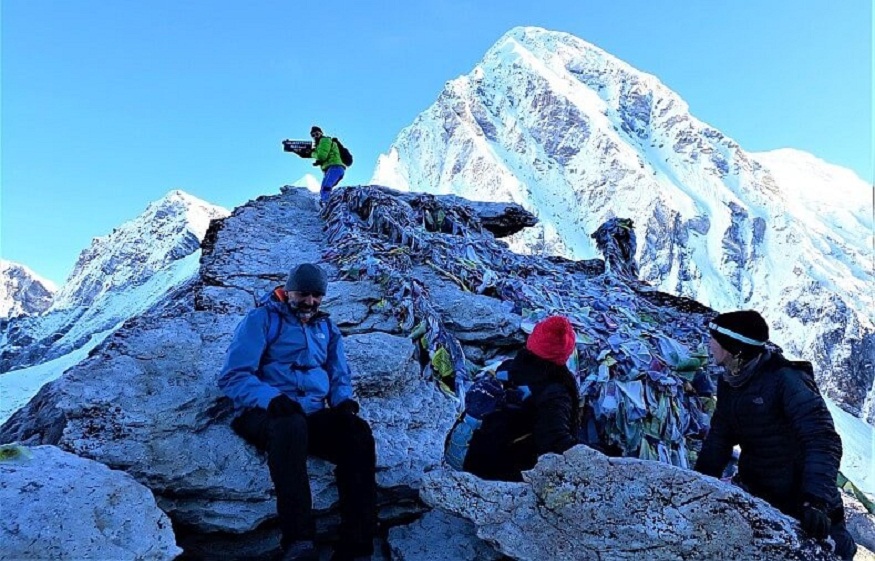
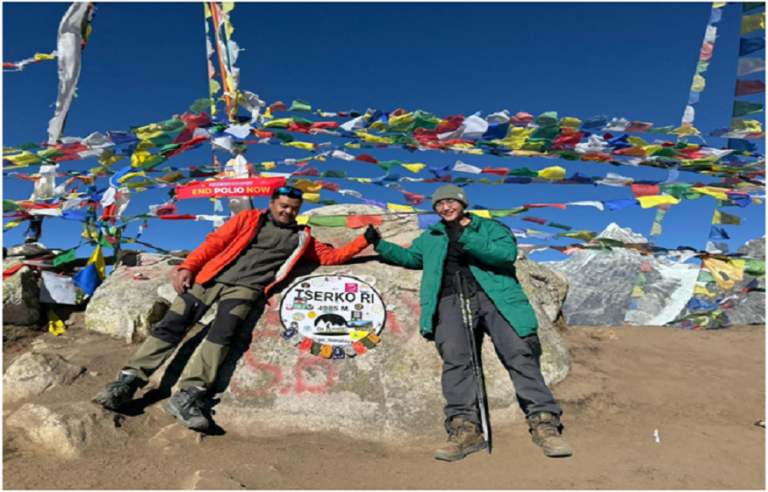
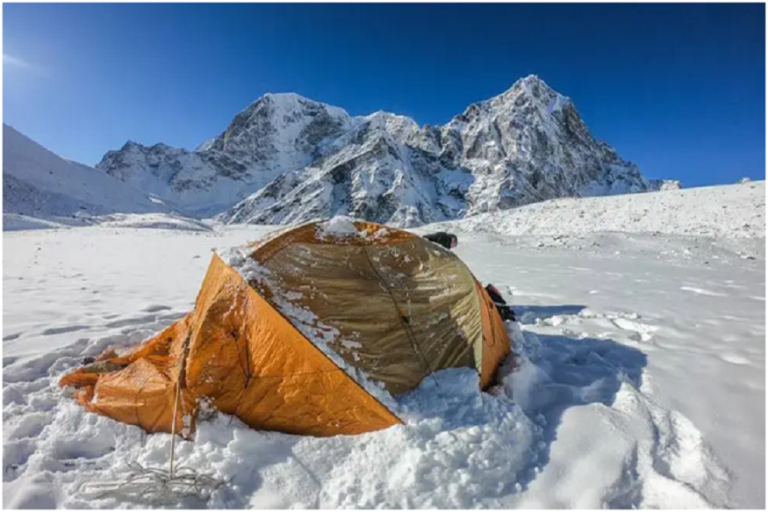

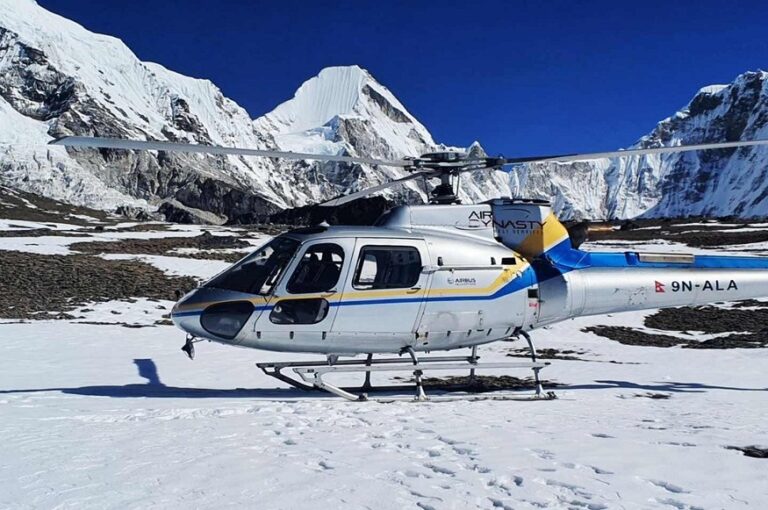

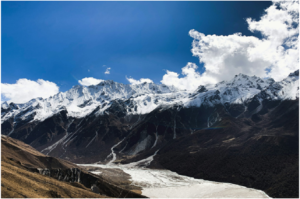

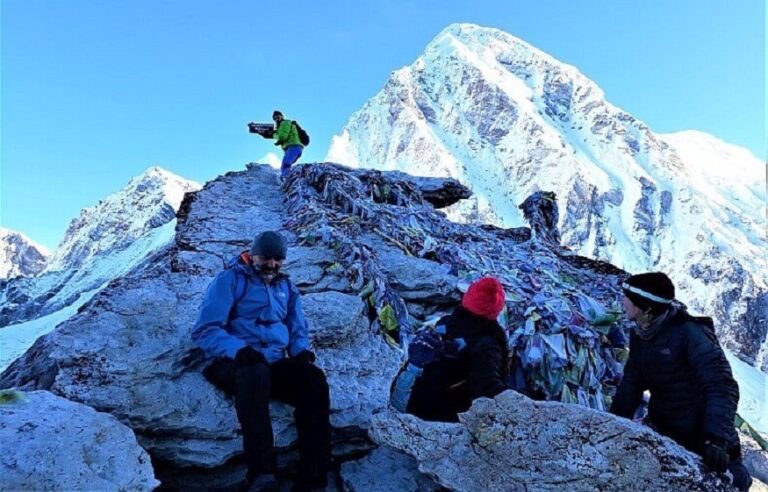

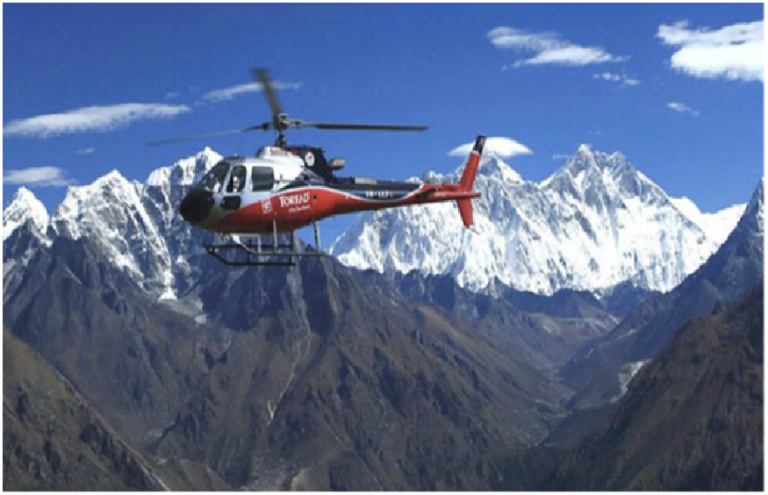
+ There are no comments
Add yours